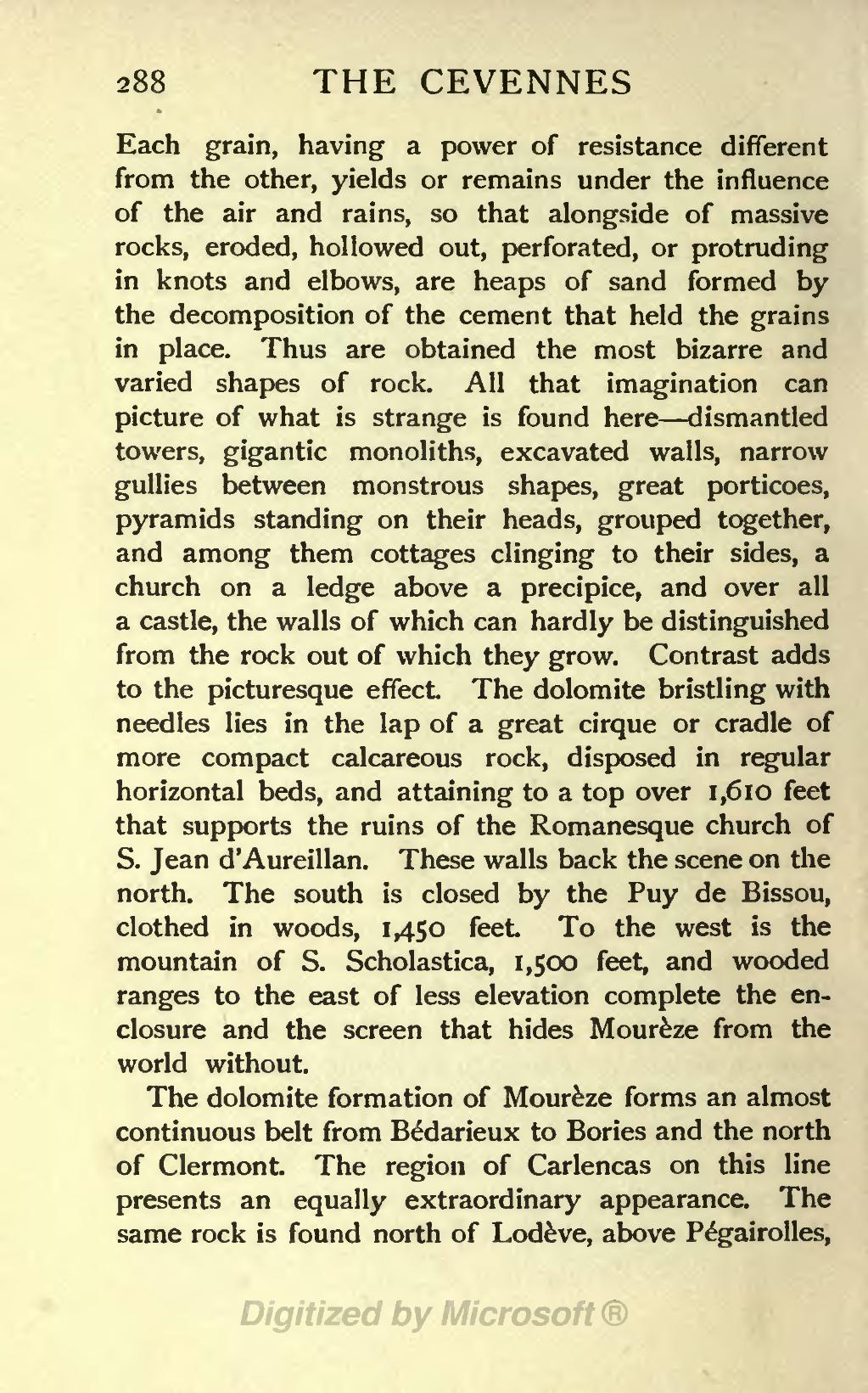Each grain, having a power of resistance different from the other, yields or remains under the influence of the air and rains, so that alongside of massive rocks, eroded, hollowed out, perforated, or protruding in knots and elbows, are heaps of sand formed by the decomposition of the cement that held the grains in place. Thus are obtained the most bizarre and varied shapes of rock. All that imagination can picture of what is strange is found here—dismantled towers, gigantic monoliths, excavated walls, narrow gullies between monstrous shapes, great porticoes, pyramids standing on their heads, grouped together, and among them cottages clinging to their sides, a church on a ledge above a precipice, and over all a castle, the walls of which can hardly be distinguished from the rock out of which they grow. Contrast adds to the picturesque effect. The dolomite bristling with needles lies in the lap of a great cirque or cradle of more compact calcareous rock, disposed in regular horizontal beds, and attaining to a top over 1,610 feet that supports the ruins of the Romanesque church of S. Jean d'Aureillan. These walls back the scene on the north. The south is closed by the Puy de Bissou, clothed in woods, 1,450 feet. To the west is the mountain of S. Scholastica, 1,500 feet, and wooded ranges to the east of less elevation complete the enclosure and the screen that hides Mourèze from the world without.
The dolomite formation of Mourèze forms an almost continuous belt from Bédarieux to Bories and the north of Clermont. The region of Carlencas on this line presents an equally extraordinary appearance. The same rock is found north of Lodève, above Pégairolles,
